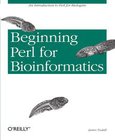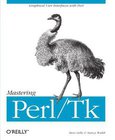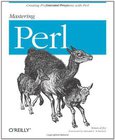Mastering Perl for Bioinformatics

Book Details:
| Publisher: | O'Reilly Media |
| Series: | OReilly , Mastering |
| Author: | James D. Tisdall |
| Edition: | 1 |
| ISBN-10: | 0596003072 |
| ISBN-13: | 9780596003074 |
| Pages: | 377 |
| Published: | Jun 01 2003 |
| Posted: | Nov 19 2014 |
| Language: | English |
| Book format: | CHM |
| Book size: | 0.7 MB |
Book Description:
Historically, programming hasn't been considered a critical skill for biologists. But now, with access to vast amounts of biological data contained in public databases, programming skills are increasingly in strong demand in biology research and development. Perl, with its highly developed capacities in string handling, text processing, networking, and rapid prototyping, has emerged as the programming language of choice for biological data analysis.Mastering Perl for Bioinformatics covers the core Perl language and many of its module extensions, presenting them in the context of biological data and problems of pressing interest to the biological community. This book, along with Beginning Perl for Bioinformatics, forms a basic course in Perl programming. This second volume finishes the basic Perl tutorial material (references, complex data structures, object-oriented programming, use of modules--all presented in a biological context) and presents some advanced topics of considerable interest in bioinformatics.The range of topics covered in Mastering Perl for Bioinformatics prepares the reader for enduring and emerging developments in critical areas of bioinformatics programming such as:Gene finding String alignment Methods of data storage and retrieval (SML and databases) Modeling of networks (graphs and Petri nets) Graphics (Tk) Parallelization Interfacing with other programming languages Statistics (PDL) Protein structure determination Biological models of computation (DNA Computers) Biologists and computer scientists who have conquered the basics of Perl and are ready to move even further in their mastery of this versatile language will appreciate the author's well-balanced approach to applying Perl's analytical abilities to the field of bioinformatics. Full of practical examples and real-world biological problem solving, this book is a must for any reader wanting to move beyond beginner level Perl in bioinformatics.
Download Link:
Related Books:
Beginning Perl for Bioinformatics
With its highly developed capacity to detect patterns in data, Perl has become one of the most popular languages for biological data analysis. But if you're a biologist with little or no programming experience, starting out in Perl can be a challenge. Many biologists have a difficult time learning how to apply the language to bioinformatics. The most popular Perl programming books are often too theoretical and too focused on computer science for a non-programming biologist who needs to solve very specific problems.Beginning Perl for Bioinformatics is designed to get you quickly over the Perl language barrier by approaching programming as an important new laboratory skill, revealing Perl programs and techniques that are immediately useful in the lab. ...
Mastering Perl/TK
Graphical User Interfaces in Perl
Perl/Tk is the marriage of the Tk graphical toolkit with Perl, the powerful programming language used primarily for system administration, web programming, and database manipulation. With Perl/Tk, you can build Perl programs with an attractive, intuitive GUI interface with all the power of Perl behind it.Mastering Perl/Tk is the "bible" of Perl/Tk: It's not only a great book for getting started, but the best reference for learning the techniques of experienced Perl/Tk programmers. The first half of the book contains the basics on how to use Perl/Tk, and then branches out into advanced applications with a series of extensive program examples. The result is a book accessible for novices, and invaluable for experienced programmers ready to lea...
Mastering Perl
This is the third in O'Reilly's series of landmark Perl tutorials, which started with Learning Perl, the bestselling introduction that taught you the basics of Perl syntax, and Intermediate Perl, which taught you how to create re-usable Perl software. Mastering Perl pulls everything together to show you how to bend Perl to your will. It convey's Perl's special models and programming idioms. This book isn't a collection of clever tricks, but a way of thinking about Perl programming so you can integrate the real-life problems of debugging, maintenance, configuration, and other tasks you encounter as a working programmer. The book explains how to:Use advanced regular expressions, including global matches, lookarounds, readable regexes, and regex debuggi...
2007 - 2021 © eBooks-IT.org



